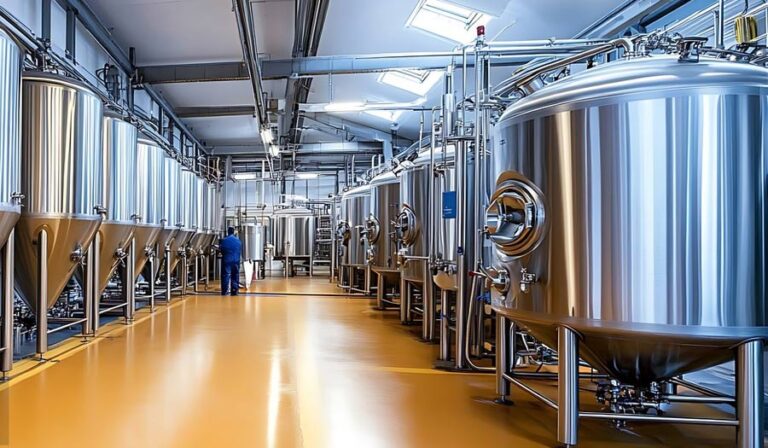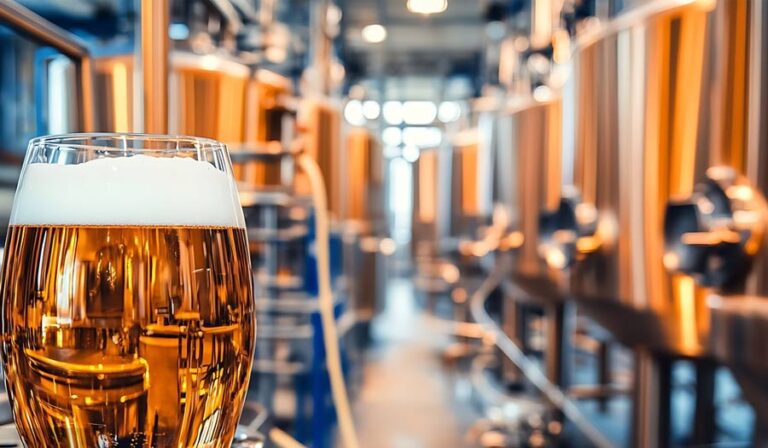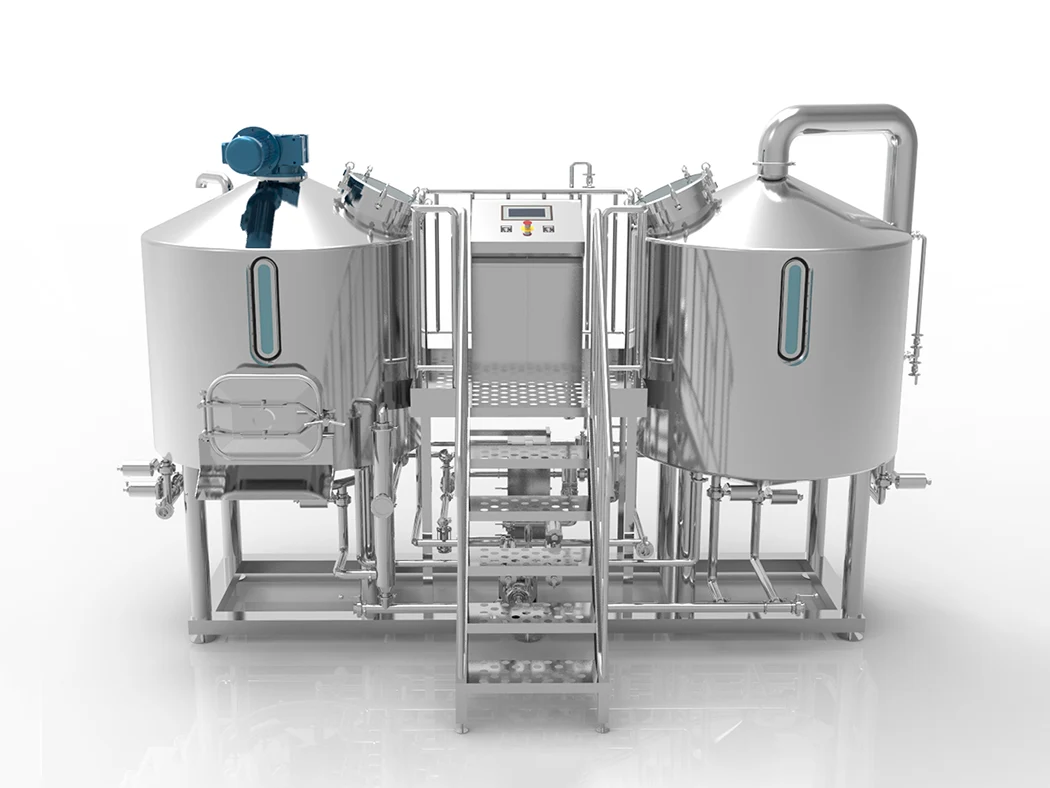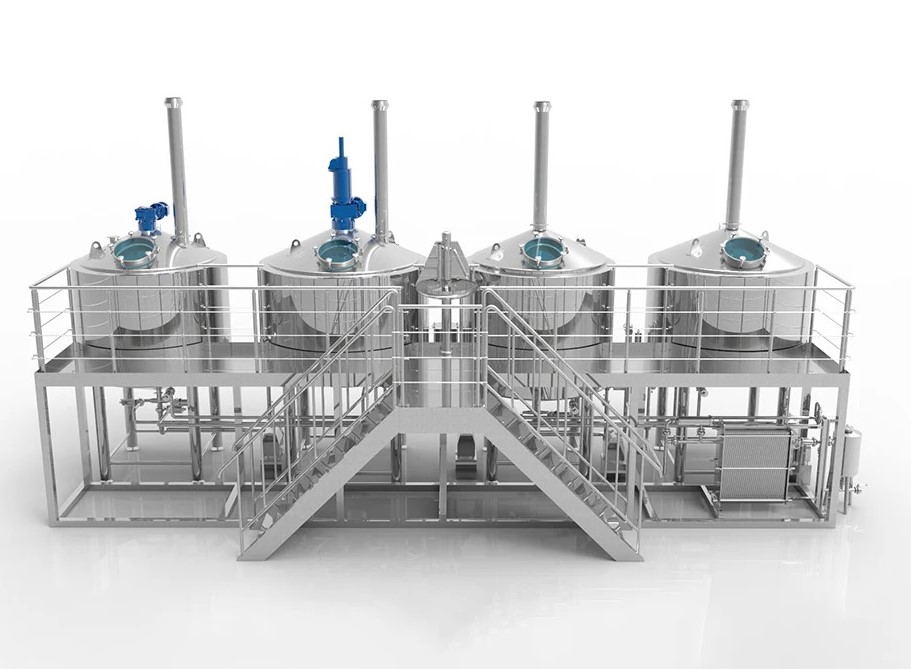With the global rise of craft beer, more and more entrepreneurs and brewery investors are turning their attention to the beer brewing industry. As the core of beer production, équipement de brasserie plays a crucial role in determining beer quality, production efficiency, and cost control. So, what equipment does a modern brewery actually need? And what role does each piece of equipment play in the brewing process?From the perspective of a professional brewing equipment manufacturer, Micet Group provides a comprehensive overview of the essential brewing systems required in a modern brewery—covering their functions, selection criteria, and future development trends.
Brewery Brewing Process Overview
Raw Material Preparation
The main raw materials for beer include malt, hops, water, and yeast. Before brewing, the malt must be selected and crushed to facilitate the subsequent mashing process. Water quality has a significant impact on the flavor of the beer, so brewing water is typically softened or mineral-adjusted to achieve the desired pH level and ion composition. The type and quantity of hops are carefully calculated based on the beer style being brewed. Yeast needs to be propagated in advance to ensure sufficient activity and quantity for fermentation.

L'empâtage et le lautage
The crushed malt is mixed with hot water in the mash tun, where a series of controlled temperature rests convert the starches into fermentable sugars. Precise control of temperature and time is critical for achieving efficient sugar conversion. After mashing, the wort is separated from the spent grain in the lauter tun. The clear wort is collected for the next stage, while the spent grain is typically recycled as animal feed.
Boiling and Hop Addition
The filtered wort is transferred to the brew kettle for boiling, usually for 60 to 90 minutes. During boiling, hops are added in stages to impart bitterness, aroma, and preservative properties. Boiling also sterilizes the wort and precipitates unwanted proteins, enhancing clarity and stability. After boiling, the wort must be rapidly cooled to the proper fermentation temperature.
Refroidissement et fermentation
The hot wort is cooled via a plate heat exchanger to around 8°C (for lagers) or 18°C (for ales), then transferred to a fermentation tank where yeast is pitched. Primary fermentation typically lasts 7 to 14 days, during which the yeast converts sugars into alcohol and carbon dioxide, forming the base flavors of the beer. Temperature, pressure, and fermentation duration are key factors influencing the beer’s final taste.
Maturation and Filtration
Once primary fermentation is complete, the beer undergoes several weeks of cold maturation. This step allows flavors to mellow, undesirable compounds to dissipate, and suspended particles to settle. The beer is then filtered to remove residual yeast and proteins, improving clarity and stability. In some processes, pasteurization is performed to extend shelf life.
Packaging and Storage
Finally, the finished beer is transferred to the packaging line and filled into bottles, cans, or kegs according to market requirements. The packaging process is conducted in a sterile environment to prevent contamination. Once packaged, the beer is stored in cold rooms for a short period before being distributed to the market or point of sale.
Detailed Overview of Core Brewing Equipment Systems in a Brewery
Milling System
The milling system mainly consists of a malt mill, which is used to crush malt into a suitable particle size for efficient starch conversion during mashing. Most mills use a roller structure, and the gap between the rollers can be adjusted to control the crushing fineness. Proper milling is essential for both effective mashing and smooth lautering. Over-crushing can lead to filtration issues, while under-crushing may result in poor sugar extraction.
Système de brassage
The brewhouse is the thermal core of the brewery and typically includes a mash tun, lauter tun, brew kettle, and whirlpool (or trub separator). The mash tun mixes the milled malt with water and uses controlled heating to convert starches into sugars. The lauter tun separates the sweet wort from the spent grain. The brew kettle heats the wort and allows for the addition of hops, achieving sterilization, concentration, and flavor development. The whirlpool rapidly separates hot break and hop residue from the boiled wort. Modern brewhouse systems often feature automated controls and CIP (clean-in-place) capabilities.

Cooling and Heat Exchange System
After boiling, the hot wort must be quickly cooled to fermentation temperature to prevent microbial contamination and preserve yeast viability. This is achieved through a plate heat exchanger, which uses cooling and ice water in separate stages to bring the wort down to the target temperature efficiently. To ensure clean water for heat exchange, the system is often paired with water softeners and sterilizing filters.
Système de fermentation
Les fermentation system consists of multiple stainless steel conical fermenters (CCTs), forming the “fermentation cellars” of the brewery. Each tank is equipped with a temperature control jacket, pressure regulation valves, sampling ports, and CIP spray balls, allowing for precise control of primary fermentation and maturation. Tank capacities range from a few hundred liters to several hundred hectoliters, depending on production needs. Some breweries also include dedicated yeast recovery tanks and propagation systems to recycle and manage yeast cultures.
Filtration and Stabilization System
To improve clarity and flavor stability, the beer undergoes physical filtration after fermentation. Common equipment includes diatomaceous earth filters, membrane filters, or centrifuges, which remove residual yeast, protein particles, and other suspended solids. Some systems also incorporate cold membrane stabilization to prevent chill haze. Craft breweries may choose to retain yeast suspension depending on the beer style.
Cleaning and CIP System
The CIP (clean-in-place) system is essential for maintaining hygiene across the brewery. It regularly cleans brewing pipelines, tanks, and heat exchangers. The system typically includes acid/alkali solution tanks, a hot water tank, cleaning pumps, and programmable controls for automatic multi-step cleaning and sanitization cycles. A well-designed CIP system significantly reduces cross-contamination risks and ensures consistent beer quality.
Packaging System
The packaging system connects the brewery with the market. Depending on the product format, common systems include bottling lines, canning lines, and keg-filling stations. Each line usually comprises bottle/keg washers, fillers, cappers/sealers, labelers, quality inspection units, and carton packaging modules. Large modern breweries often feature automated palletizing and logistics systems. To prevent oxidation and contamination, the packaging area typically uses clean airflow and inert gas purging.
Reference Configuration Plan for Brewery Equipment (Classified by Scale)
|
Type de brasserie |
Daily Capacity (L) |
Recommended System Configuration |
Scénarios applicables |
|
Microbrasserie |
200–500 L |
2-vessel or 3-vessel system, primarily manual control |
Bars, guesthouses, small craft brewing workshops |
|
Medium-sized Brewery |
1000–3000 L |
3-vessel or 4-vessel system, semi-automatic or PLC-controlled |
Urban craft beer brands, small-batch wholesale production |
|
Large-scale Brewery |
5000 L and above |
4-vessel or multi-set linked systems, fully automated PLC control |
Commercial beer factories, large chain breweries |

Tips for Choosing a Brewery Equipment Manufacturer
Define Brewing Goals and Equipment Needs
Before selecting a brewery equipment supplier, it’s essential to clearly define your brewing goals—this includes your planned annual output, beer styles, production process, and potential future expansion. Small craft breweries typically require 500L to 3000L manual or semi-automated systems, while medium to large-scale industrial operations should consider modular, highly automated systems. A well-defined need helps avoid under- or over-investment and allows manufacturers to provide more accurate technical proposals.
Assess Manufacturer Credentials and Industry Experience
The manufacturer’s background and brewing industry experience are critical. Choose a company with a proven track record in brewery equipment manufacturing, especially those capable of providing turnkey solutions for entire breweries. Look for certifications such as ISO, CE, or ASME, which ensure product quality and international compliance. Request references or client case studies and, if possible, visit sites where their equipment is in operation.
Focus on Craftsmanship and Build Quality
High-quality equipment not only improves efficiency but also directly impacts the stability and flavor of the beer. Pay attention to material selection (e.g., 304 or 316L stainless steel), welding techniques, heating uniformity in jackets, and interior polishing quality (preferably Ra ≤ 0.4 μm). The automation system should offer accurate temperature control, data traceability, and fault alerts. Additionally, a well-designed system should be easy to clean and maintain, minimizing hygiene risks.
Evaluate After-Sales Service and Technical Support
Reliable after-sales support is vital once the equipment is operational. A good supplier should offer installation, commissioning, training, and fast technical assistance. For new breweries, early-stage brewing guidance and equipment training are especially important. Some manufacturers also offer value-added services such as brewer consultation, CIP system calibration, and recipe optimization. It’s advisable to sign a service agreement specifying warranty duration, spare parts policy, and remote support availability.
Look Beyond Price—Consider Overall Value
While price is a key factor, avoid choosing a supplier solely based on the lowest offer. Cheap equipment may cut corners on materials, welds, or automation features, leading to high maintenance costs and inconsistent product quality over time. Instead, evaluate the total life cycle cost, considering purchase price, energy efficiency, maintenance needs, and spare part availability. Choose a supplier with balanced pricing and strong service capability.
Plan for Expansion and System Compatibility
As your market grows, you may need to scale up or diversify your beer offerings. Choose equipment that supports modular expansion and software compatibility. For example, can additional fermenters be added easily? Is the control system upgradeable? A future-ready system design can save significant time and costs in later upgrades.
Réflexions finales
Beer is a craft that blends technology with artistry—and brewing equipment is the foundation of that craft. A scientifically designed, stable, and efficient system not only ensures beer quality but also boosts long-term business value. Whether you’re a newcomer to the craft beer industry or an investor building a large-scale industrial brewery, choosing a trustworthy brewing equipment manufacturer is the first step toward success.
Micet Group has specialized in brewing equipment R&D and manufacturing for many years, offering custom solutions, turnkey services, and global on-site support. If you have any questions regarding equipment selection, pricing, or brewing solutions, feel free to contact us anytime!




